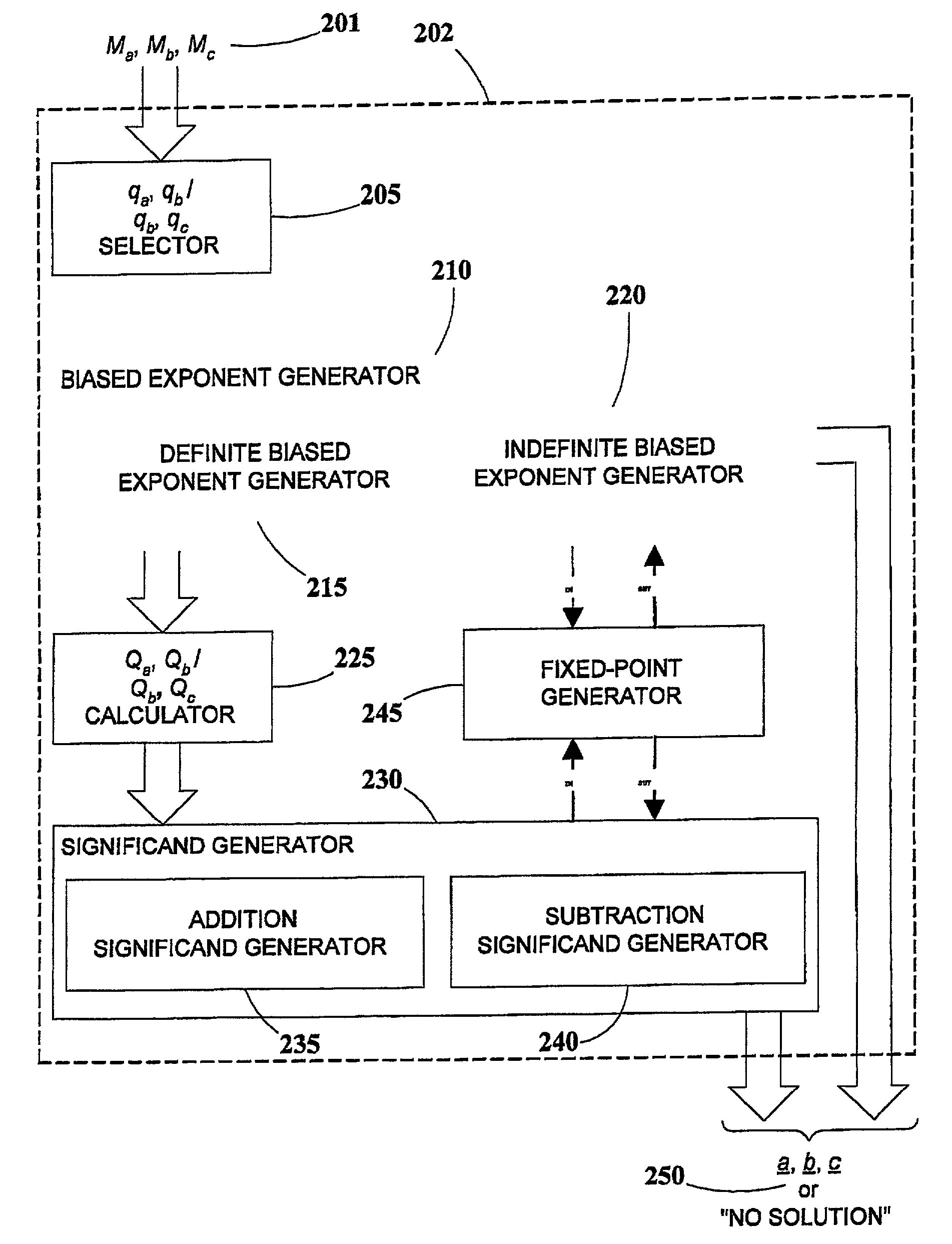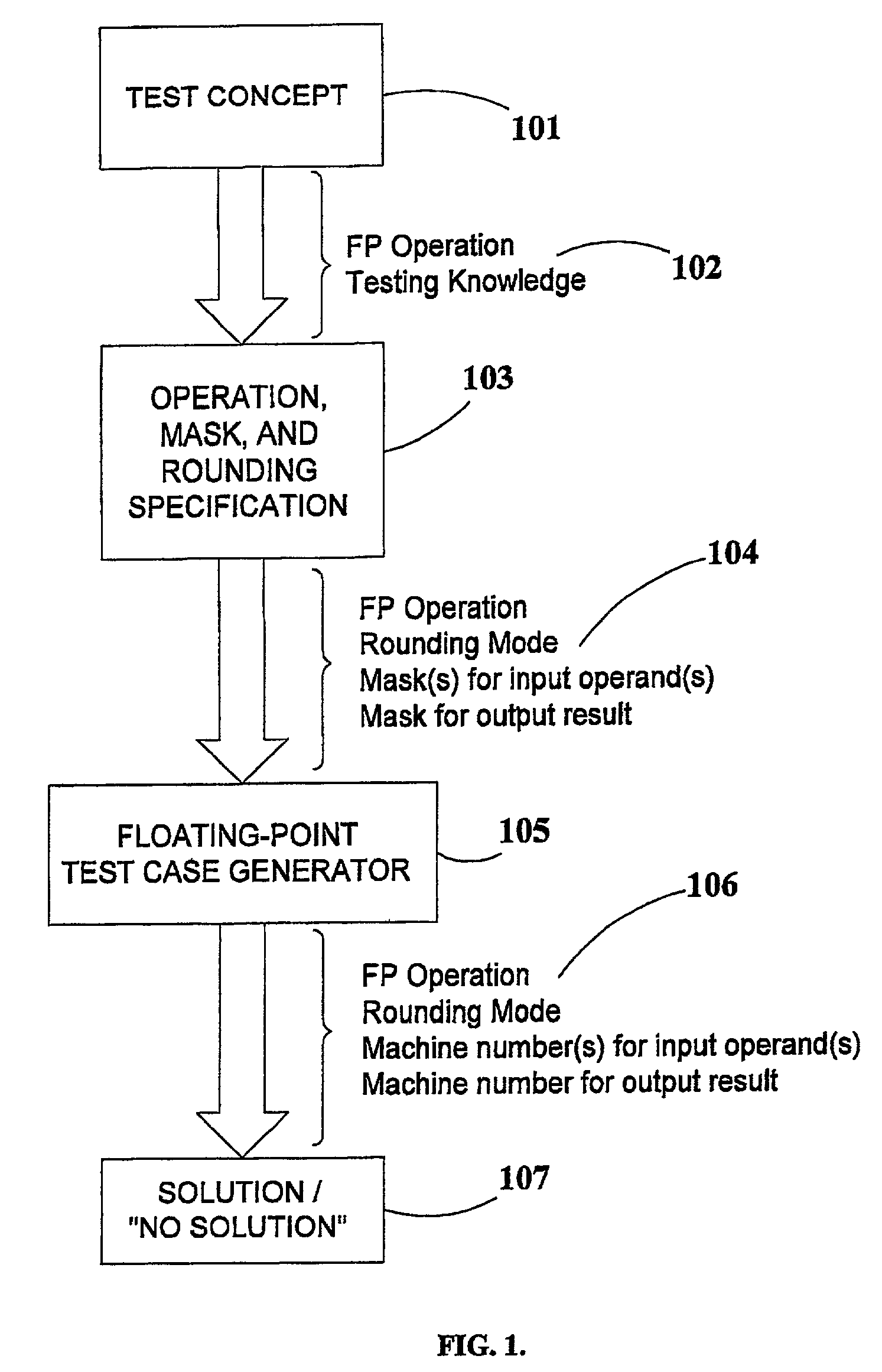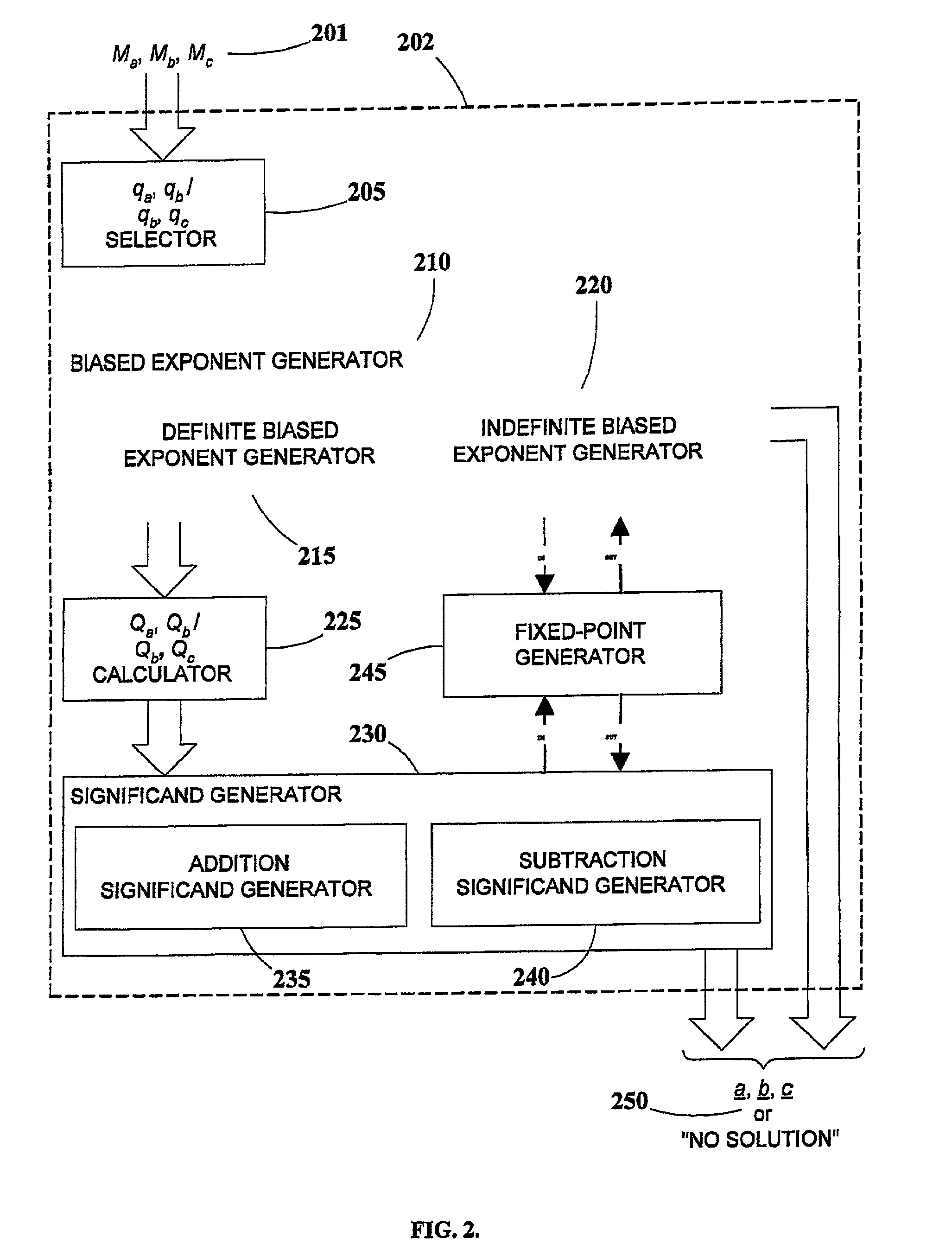Generation of mask-constrained floating-point addition and subtraction test cases, and method and system therefor
- Summary
- Abstract
- Description
- Claims
- Application Information
AI Technical Summary
Benefits of technology
Problems solved by technology
Method used
Image
Examples
Embodiment Construction
[0134]The principles and operation of a floating-point addition / subtraction test-case generating method and generator according to the present invention may be understood with reference to the drawings and the accompanying description.
Outline of the Method
[0135]As was stated earlier, the problem of generating floating point numbers, satisfying c=round(a±b), may be divided into two cases: addition of non-negative machine numbers and subtraction of non-negative machine numbers.
[0136]Consider first the addition case. Namely, let c=round(a+b), where a, b, c are non-negative machine numbers. The biased exponent shifts are denoted qa=ec−ea and qb=ec−eb, where ea, eb, ec are the biased exponents. It is not difficult to see that qa, qb are non-negative integers, one of which must be either 0 or 1. Likewise, the unbiased exponent shifts are denoted Qa=Ec−Ea and Qb=Ec−Eb, where Ea, Eb, and Ec are the unbiased exponents. It is easy to see that Qa, Qb are also non-negative integers, one of whic...
PUM
 Login to View More
Login to View More Abstract
Description
Claims
Application Information
 Login to View More
Login to View More - R&D
- Intellectual Property
- Life Sciences
- Materials
- Tech Scout
- Unparalleled Data Quality
- Higher Quality Content
- 60% Fewer Hallucinations
Browse by: Latest US Patents, China's latest patents, Technical Efficacy Thesaurus, Application Domain, Technology Topic, Popular Technical Reports.
© 2025 PatSnap. All rights reserved.Legal|Privacy policy|Modern Slavery Act Transparency Statement|Sitemap|About US| Contact US: help@patsnap.com



